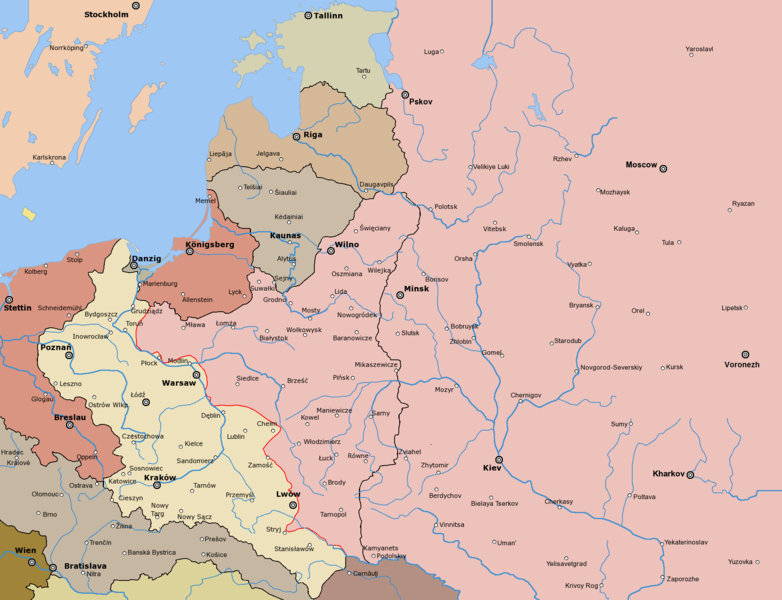With the support of the Ukrainian Soviet Socialist Republic, Soviet Russia went to war against the Second Polish Republic and the Ukrainian Peoples Republic over territorial controls of what is modern Ukraine and parts of Belarus.
When the Great War ended in 1918, the Treaty of Versailles only vaguely defined the international borders between Poland and Bolshevik Russia.
 |
| Jozef Pilsudki |
 |
| Yavhen Petrushevych |
With the Russian civil war turning in favour of the Bolsheviks, the Poles and Ukrainians set aside their differences to defend themselves against the advancing Red Army.
 |
| Polish Offensive Early 1920 |
The Red Army had initial success in early 1920, but was quickly met by swift Polish counter attacks, resulting in heavy losses on both sides. With a quick sweep, the Red Army pushed its way into the Polish capital of Warsaw, causing fear among Western nations, as the German's and Russians did not get along, and their were getting close to one another.
 |
| Russian Offensive Summer 1920 |
By midsummer 1920, the total fall of Warsaw seemed inevitable, but by late August, Polish forced achieved a decisive victory and began to advance eastward until the Soviets sued for peace and the war ended in October 1920 with a ceasefire agreement.
A Formal treaty, the Peace of Riga was signed on March 18, 1921 dividing the disputed territories between Poland and Russia. Much of the territory ceded to Poland would become part of the Soviet Union following World War Two.
The war left nearly a hundred thousand dead and nearly three hundred thousand wounded. At it's peak during the Battle of Warsaw, there were nearly 1.6 million troops in combat.
To learn more about the Polish-Soviet War, please see:
White Eagle, Red Star: The Polish-Soviet War, 1919-20 (1972) by Norman Davies
Remembering History - The Polish-Soviet War 1919-1921
Warfare is a fascinating subject. Despite the dubious morality of using violence to achieve personal or political aims. It remains that conflict has been used to do just that throughout recorded history.
ReplyDeleteYour article is very well done, a good read.
The official source for NFL news, video highlights, fantasy football, game-day coverage, schedules, stats, scores and more. Cowboys live
ReplyDelete